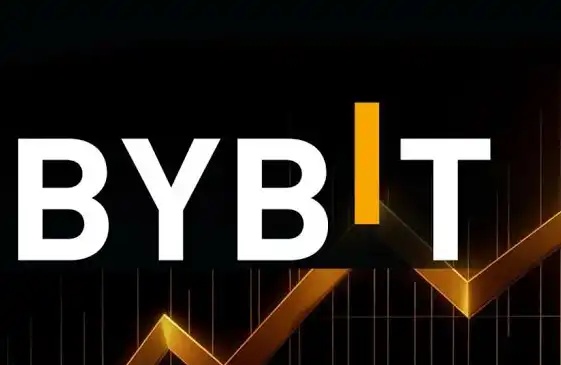Friend.tech, without innovation, provides a product lesson for the cryptocurrency industry.
How long has it been since you last saw a dApp on the homepage of your screen usage? Whether it's a so-called ponzi or not, friend.tech has achieved it.

The average weekly usage time of friend.tech is 1 hour, but users often choose to use the web version.
Although some people jokingly say that the most powerful thing about friend.tech (hereinafter referred to as ft) is their "ability to mobilize top KOLs, which is irreplicable." And the top KOL, Paradigm, known as the "golden signboard" in the cryptocurrency industry, did become the driving force behind ft's first and second rounds of popularity, but it cannot explain ft's recent development trend.
From a data perspective, the development of ft is not achieved overnight. The cooling-off period from the end of August to early September not only kept ft away from the public eye, but also further reduced the number of speculators.

ft's TVL and new users, data source: DefiLlama
Recently, the healthy growth of FT has attracted more new users, as well as many DeFi and NFT players. There has even been some crossover effect, with some YouTube celebrities, OnlyFans managers, authors, internet industry practitioners, and VC groups joining FT. Even though on September 22nd, FT reduced the point rewards for self-purchasing users, the market's enthusiasm for FT could not be concealed, and FT's Total Value Locked (TVL) still reached a new high.

On September 28, 2023, after approximately 49 days since the launch of the FT product, the transaction fee income was approximately 15 million US dollars.
From the perspective of social products, the data of ft is also impressive. According to the officially released data, the next-day retention rate of ft exceeds 75%, and the weekly retention rate exceeds 50%, indicating that the product has strong stickiness and users are still using it in large numbers. At the same time, the average daily usage time of active key holders of FriendsTech exceeds 30 minutes. Although some netizens joked that 27 minutes were spent on refreshing the page, recently ft seems to have strengthened its server performance, and the user experience has greatly improved compared to when it was first launched.

For the long-term development of the entire industry, the author believes that the focus is not solely on friend.tech itself, nor on its ponzi design and wealth effect. The true significance of FT is to tell the market that with existing technology, we can build products that are impressive. Even if the product is still in its early stages, the encryption industry is capable of building potential consumer-grade products through creativity and mature operational methods.
Even if the ft is not successful, the PWA technology used can bypass the Apple tax, the login method without mnemonic words, the low-handling interaction of L2, and the optimized trading matching form. It can tell the founders and developers who are rushing forward that there are still many possibilities even if they do not create new public chains and zk.
And none of the aforementioned technologies are original creations of FT. This reminds me of Henry Ford's words, "I didn't invent anything new, I just assembled the discoveries of centuries into a car."
This article is not intended to discuss whether ft is the social Uniswap moment, but rather to analyze the protocols and infrastructure used by ft starting from the first login page, based on the tweets of friend.tech founder Racer and known information. If there are any protocols that have not been covered, readers are welcome to inform us so that we can supplement them.

Stack 1: PWA
Starting from its initial product form, which was only aimed at mobile phones, ft adopted an old technology - PWA (Progressive Web App). According to Dan Romero, the founder of Farcaster, Safari has strengthened its support for PWA in version 16.4 (released in 2023), which allows users to receive ft's message push more stably.
In general, PWA is still a web application, but by providing a standard framework on mobile devices, it can achieve a user experience similar to native applications in web applications. This includes message push, background loading, offline use, native application interface (similar to native application UI and UX), and desktop icons.
And PWA is not a new thing for many developers. In foreign countries, Twitter in the era of Jack Dorsey has long supported PWA, and many platforms in China, such as Weibo and Minority Report, also support PWA, with excellent user experience. Even in the encryption industry, projects such as Coinbase, Orca, and PancakeSwap support PWA applications. Like ft, many DEX also support jumping to mobile native wallets such as MetaMask for authorization.

Supporting PWA protocols and websites
For the encryption industry, PWA technology also means bypassing the supervision of various app stores and the 30% revenue sharing of Apple Store. I don't know if you remember, a few years ago, Epic and Apple had a huge argument over the "Apple tax" issue in Fortnite. And just when Apple and several gaming giants were arguing about the "Apple tax" issue, Amazon's cloud gaming business Luna cleverly chose the PWA mode to bypass the supervision of Apple Store.
After the successful use of PWA technology in this FT and attracting enough attention, PWA may become an important implementation path in the encryption industry. Through communication with some developers, the author learned that even without considering the Apple tax, the comprehensive cost of launching PWA is lower than that of logging into the app store, and the operation and maintenance cost for the same user level is also lower.

Source: Delphi Digital
Meanwhile, PWA technology has also been a major driving force for the rapid iteration and continuous addition of new features since the launch of ft. The historical update path of ft will be updated in the following text.
For a specific introduction to PWA, please refer to the previous article by Lüdong, "Is PWA Used by Friend.Tech the Best Solution for Cryptocurrency Apps to Bypass App Portals?".
Stack 2: Privy - Embedded Wallet
After completing the "download", ft did not choose the traditional method familiar to encrypted users (downloading wallets, saving mnemonic phrases, switching networks, connecting wallets to applications, etc.), but instead created a new self-hosted wallet for users through logging in with Google accounts and Apple IDs, thus avoiding the experience of saving mnemonic phrases or private keys, simplifying the entry process, and weakening the encryption properties of the product.
Here, ft chooses the embedded wallet method of Privy, achieving an experience similar to many mainstream login methods in China and abroad - using mainstream platform accounts such as WeChat, QQ, or Google for authorization login.
If you think this embedded implementation is optional, you can imagine another version of FT: download the MetaMask wallet, connect it to MetaMask, and then connect Twitter to that account. Every time you want to buy a key from someone else on the application, you have to jump to MetaMask, sign the transaction, and then return to the application. And this user experience of FT is basically excluded from all traditional users.
Using an embedded wallet is not a betrayal of encryption, according to Privy CEO Henri Stern. In fact, it is simply a very good alternative for certain application experiences - it can put traditional internet users who log in to their email and native encryption users on the same starting line.
According to the introduction by Privy, the embedded wallet uses MPC technology and is implemented through Shamir Secret Sharing: its wallet security data is divided into N parts and can be restored using M parts out of N. Currently, Privy has allocated the wallet security data into three parts, and accessing two of them can access the account.
The ultimate result of embedded wallets is that Privy cannot independently reconstruct the mnemonic and access the user's private key, and users can access their private keys at any time without going through Privy. That is, both friend.tech and Privy cannot access the user's private key, but the user can obtain a complete cryptocurrency wallet.
However, 0xngmi, the founder of DefiLlama, also stated on social media that "currently, friend.tech stores users' keys on the front-end, which is vulnerable to attacks." However, Privy's wallet will not be launched until March 2023 and is still updating its products. For example, it recently added a password recovery function for embedded wallets. In the near future, the new address issue that is currently being criticized may also be resolved, and even hardware wallets may be integrated with ft in some way. LianDong will continue to pay attention to the technical updates of embedded wallets and consumer-grade encryption products.
Stack 3: RaaS-Base, (Rollup as a Service)
After completing the account registration and login, and binding Twitter, inject Ethereum into the newly created wallet (including options for both the main network and Base), and transfer Ethereum on the Base chain to this account. FT is the only and universal currency on the Base chain. Thanks to every transaction occurring on the Base chain, the transaction fees for FT users are extremely low.
From the popularity of Base's launch, it can be seen that the market is gradually transforming the fact of "one-click issuance of coins" into the expectation of "one-click issuance of chains" (RaaS, Rollup as a Service) narrative. Based on the OP Stack, Base has even surpassed Optimism in some data. Summarizing the descriptions of various institutions and media before, OP Stack has the characteristics of shared security, powerful functions, low cost, and open source. Using RaaS can greatly avoid the prevalent problem of "reinventing the wheel" in the encryption industry and also reduce fragmentation.

Recently, Base has surpassed Optimism in both user count and transaction volume, according to data from DefiLlama.
And in the future, with the launch of more RaaS protocols such as Conduit, Caldera, and Eclipse, perhaps deploying L2 with just one click will become commonplace.
Stack 4: Bonding Curve
FT founder Racer seems to have a special interest in DeFi. In the previous image-sharing social product Stealcam created by her, she introduced an automatic trading matching mechanism, which increases the price of the right to open the image of Stealcam by 10% plus 0.001 ETH at a certain frequency, while paying a certain protocol income to the creator. Stealcam
In the ft industry, Racer directly builds all transactions on the bonding curve without any external LP (Liquidity Provider), forming a natural transaction medium between participants in each Room. The price of each person's Room and Key is rational and traceable. The simple and transparent calculation method avoids complicated calculations and transaction loopholes.

ft key's bonding curve curve
Of course, many users are discussing the phenomenon that the current key price under the bonding curve is easily too high, which may affect the payment willingness of potential joiners, and may also be a problem that the FT team needs to face and solve.
Stack 5: Others
Even though everything about ft comes from smart contracts on the Base chain (users can interact with ft through other front-ends), it seems that everyone thinks of ft as a Web 2.5 product.
For example, PWA itself is a technology that relies on centralized servers for support. The chat content in each Room in ft is completely centralized and is not encrypted or stored on decentralized storage protocols such as IPFS or Ar. In addition, user addresses and Twitter user information are strongly bound, which some users see as a form of vampire attack or parasitism.
However, the derivative activities triggered by ft are all based on smart contracts. For example, the previous memory pool leak incident, which caused robots to purchase a large number of new user keys in the same block. And now, various robots and derivatives based on the web or TG bot end have been launched. Even future activities such as key-based voting and NFT distribution will also be based on the chain.
As the focus gradually shifts towards Mass Adoption and consumer-level applications in the cryptocurrency industry, controversies surrounding decentralization are sure to arise. However, as mentioned in an article by Privy, today's Web3 is geared towards users, not just experts.
Inspiration
To some extent, friend.tech does indeed resemble a traditional internet product, as evidenced by its frequent adjustments to product and rules: fast iteration speed and low cost.
Product Iteration
The product iteration speed of ft is undoubtedly far beyond the average standard of the encryption industry. This can be most intuitively felt from the navigation bar at the bottom of the product. The initial version of ft only had three options: home, explore, and airdrop. Now there are five options: home, follow list, chat, explore, and airdrop. In short, ft is more like a product now.

FT function comparison, the top section is the initial version and the bottom section is the version after multiple iterations.
Lu Dong also organized the update events released by FT, presenting the update content and frequency of FT products in a more intuitive way. If it is true, as rumored in the community, that the FT team only has three members, the update frequency of this product is enough to surprise many users familiar with the DeFi era.

精细化运营
Fine-grained operation
Since the airdrop hunters became the main users in the cryptocurrency industry, the game between the project parties and the witch attacks has become a focus. However, the black box and high-frequency adjustments of the scoring rules of FT do not seem to have triggered a large-scale discussion on centralization in the community, and many users even expressed their approval.
Rapid iteration is difficult to achieve in smart contracts where code is law, but the contract for ft only fixes the transaction layer, while points and product features are at the data layer. How to adjust the variable rules to attract more users and stimulate user activity in order to promote the growth of smart contract data is the goal. Centralized adjustment is undoubtedly a good solution.
Just like traditional internet products that are well-known to users, it takes a lot of internal data analysis, research, and AB testing to figure out the appropriate PMF (Product Market Fit).
The FT team also has a well-planned marketing strategy. For example, in terms of product launch, the first wave of hype comes from the KOL promotion and a large-scale cold start, which has an impact on the vast majority of crypto users. When the product's upward momentum wanes, announcing the Paradigm financing adds more endorsement to the product, while also attracting short sellers and more interested institutions. At the same time, the FT team also caters to the (3,3) strategy of the FT community, providing assistance for mutual purchases.
Meituan co-founder Wang Huiwen mentioned in his product course that many pioneers are facing tremendous challenges. At the abstract level, humans love innovation, but at the concrete level, humans fear innovation. In fact, most successful cases today are not the first products in their industry.
I hope the emergence of friend.tech can inspire more new ideas and creative products in the industry, and look forward to more emerging encrypted consumer applications.
欢迎加入律动 BlockBeats 官方社群:
Telegram 订阅群:https://t.me/theblockbeats
Telegram 交流群:https://t.me/BlockBeats_App
Twitter 官方账号:https://twitter.com/BlockBeatsAsia
 Forum
Forum OPRR
OPRR Finance
Finance
 Specials
Specials
 On-chain Eco
On-chain Eco
 Entry
Entry
 Podcasts
Podcasts
 Data
Data


 Summarized by AI
Summarized by AI







